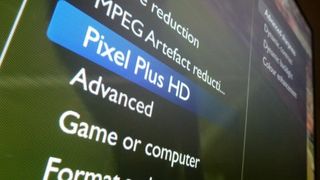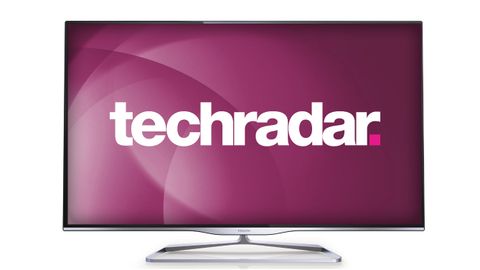Why you can trust TechRadar
The 42PFL5008 presents a lot of what's great about high-end Philips TVs, with one or two exceptions. For kick-off there's some terrific native sharpness, with fine Full HD detailing in close-ups obvious during our Blu-ray test disc Hugo. That's almost par for the course on any Philips TV, and with it comes some natural-looking colours and skin tones that just about convince.
We found that Dynamic Contrast was best switched-off, so as to create a more comfortable picture, though it's obvious that the 42PFL5008 can create some bright, sparkling peak whites. Colour Enhancement – also part of Pixel Plus HD – is likewise best left off to avoid overly rosy faces, while the Dynamic Backlight is most effective on Best Power mode.

Overall contrast is good, but shadow detailing is lacking: large black areas of images – which are usually pretty convincing despite having a slight blue tint – contain little detail within. Micro Dimming is therefore only partially successful, though there's not a trace of light leakage from the corners of this edge LED-backlit LCD panel.
Despite a decent colour palette and some excellent, fine detailing in still images, the 42PFL5008 does have a problem with motion. It's not explicitly bad, but its 300Hz Perfect Motion Rate feature isn't the most fluid around; as Hugo runs through the dark tunnels and passageways of the train station there is some noticeable loss of detail and blur.
While hi-def MKV files are treated well, the 42PFL5008 does less well with standard-definition TV channels. With the Noise Reduction switched off, pictures look grainy and really low bitrate, though switching it on to maximum power merely creates a clean but very soft image.
The 42PFL5008's performance with 3D has similar issues to 2D inasmuch as the image is studded with a nagging motion blur that it can't shift. Some won't mind at all that the 42PFL5008 lacks Perfect Motion Rate frame insertion tech, since it can create a video-like look, but we think 3D demands a sense of immersion that the juddery look of 'cinematic' images interrupts. So while the 42PFL5008 does create as much 3D depth as we could wish for, the opening sequences of Hugo seem a bit fake and unconvincing.

Likewise, we're not convinced that Ambilight lends a hand to 3D and makes it more convincing per se, but it's a great effect nonetheless, and to find it on a £700 telly is a treat.
Horizontal lines are obvious throughout each frame of 3D, though we're willing to forgive that innate characteristic of the 3D filter used on Easy 3D screens. Those lines are always noticeable, and often visibly impact on the resolution of the image. As the camera zooms in on round objects, such as the clocks of Gare Montparnasse in Hugo, they have jagged edges that visibly break up. We do, however, like the bold and contrasty colour palette of 3D on the 42PFL5008.
Jamie is a freelance tech, travel and space journalist based in the UK. He’s been writing regularly for Techradar since it was launched in 2008 and also writes regularly for Forbes, The Telegraph, the South China Morning Post, Sky & Telescope and the Sky At Night magazine as well as other Future titles T3, Digital Camera World, All About Space and Space.com. He also edits two of his own websites, TravGear.com and WhenIsTheNextEclipse.com that reflect his obsession with travel gear and solar eclipse travel. He is the author of A Stargazing Program For Beginners (Springer, 2015),


